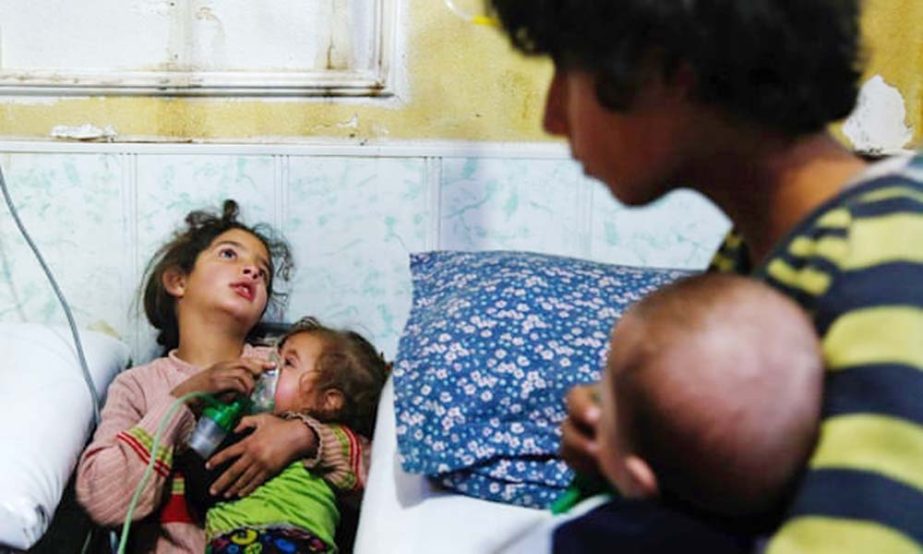
AP, The Hague :
The global chemical weapons watchdog said Friday it found “reasonable grounds” that chlorine was used as a weapon in a deadly attack on the Syrian town of Douma last year.
The determination was contained in a detailed report by the Organization for the Prohibition of Chemical Weapons’ fact finding mission that investigated the April 7, 2018 attack. Medical workers said at the time that the attack killed more than 40 people.
The mission’s mandate does not include laying blame.
In a statement, the OPCW said the mission visited Douma, analyzed samples taken from the scene and from people affected, interviewed witnesses and studied toxicological and ballistics analyses. The investigators were delayed by several days from reaching the scene by security concerns, leading to fears that evidence could degrade or be cleaned up.
However, the data they eventually amassed and studied provided “reasonable grounds that the use of a toxic chemical as a weapon” took place, the OPCW said.
“This toxic chemical contained reactive chlorine. The toxic chemical was likely molecular chlorine.”
Survivors reached by The Associated Press in the aftermath of the attack said they were overwhelmed by the smell of chlorine on the night of April 7. Activists said many of the dead were found with foam around their mouths, an indicator for suffocation. Medical workers said they treated symptoms including difficulty breathing and fainting.
The United States, Britain and France blamed Syrian government forces and launched punitive airstrikes. Syria denied responsibility.
Douma was the final target of the government’s sweeping campaign to seize back control of the eastern Ghouta suburbs of Damascus from rebels after seven years of revolt. Militants gave up the town days after the alleged attack.
The OPCW said the report has been sent to the United Nations Security Council.
Russia, a staunch ally of Syrian President Bashar Assad, rejected claims that Syria was responsible for the attack and even brought what it called witnesses to The Hague to describe their experiences.
Meanwhile, fighters with the U.S.-backed force battling the Islamic State group in eastern Syria advanced on two fronts Saturday as the extremists used snipers and booby traps to slow the push on the last area they control, a spokesman for the group said.
Mustafa Bali of the Kurdish-led Syrian Democratic Forces tweeted that “heavy clashes” were taking place in the area on the east bank of the Euphrates River.
Zana Amedi, an SDF commander, told The Associated Press that “an active ground force” is advancing into IS-held territories as the extremists resort to sniper fire and booby-traps.
Two helicopters for the U.S.-led coalition were seen circling the area of fighting around noon Saturday. A loud explosion later was heard from a distance and thick black smoke billowed into the sky, apparently a coalition airstrike.
The SDF on Friday evening resumed military operations to liberate the last piece of territory held by IS in the province of Deir el-Zour after evacuating thousands of civilians and hostages who had been besieged inside.
The military campaign to uproot the militants from the eastern banks of the Euphrates River began in September, pushing them down toward this last corner in the village of Baghouz, near the Iraqi border. The military operation was halted on Feb. 12 as the SDF said a large number of civilians and hostages were holed up in the territory, which sits atop caves and tunnels where they had been hiding.
By Friday, more than 10,000 civilians had left the IS held area and the extremists released some SDF fighters they had taken prisoner in earlier battles.
“We expect it to be over soon,” Bali said, adding that three SDF fighters were wounded.
The Britain-based Syrian Observatory for Human Rights, a war monitor, said 10 IS gunmen were killed in fighting in the Baghouz area. It added that Syrian government forces and their allies clashed with IS gunmen who tried to cross to the west bank of the Euphrates river leaving seven IS members dead.

